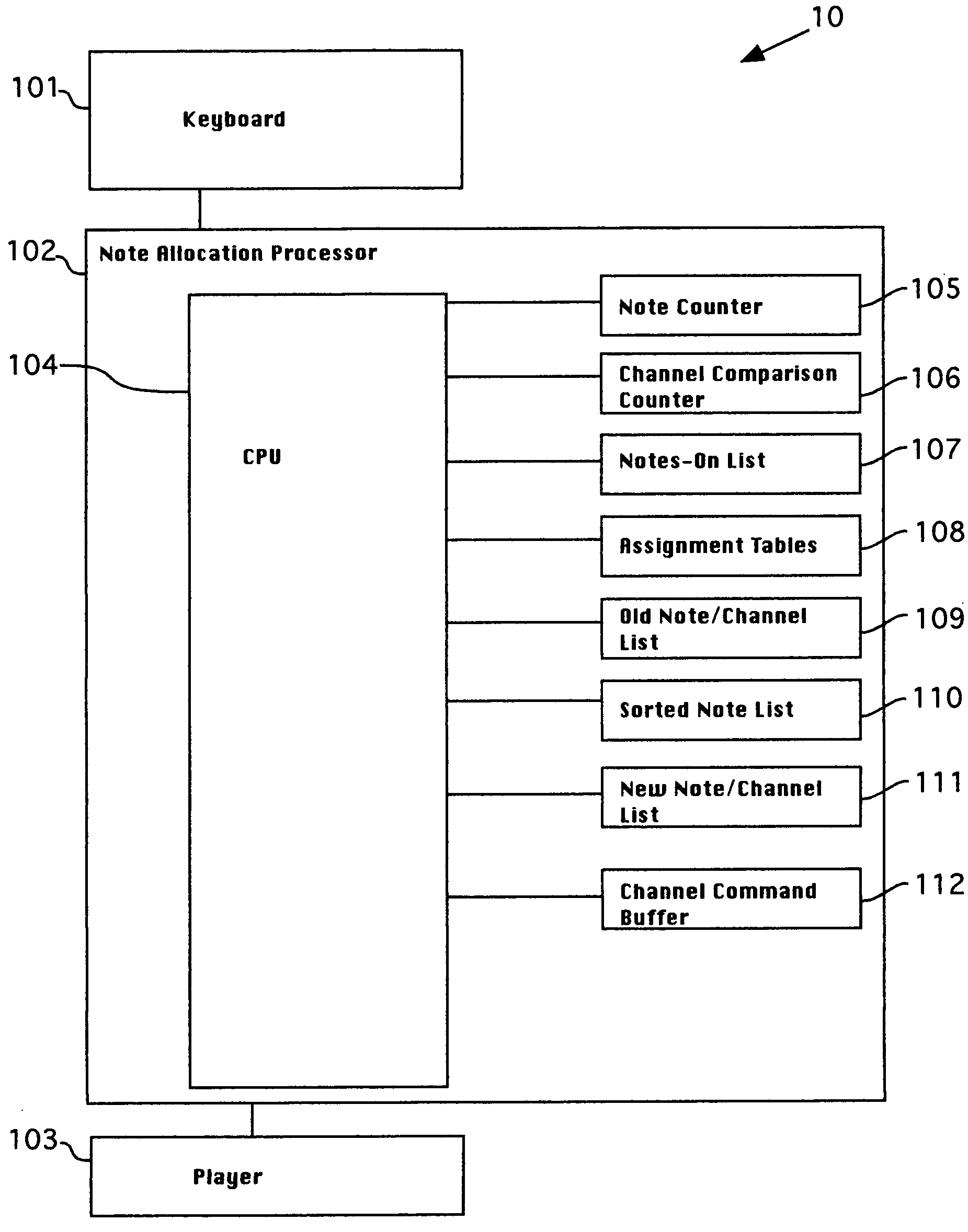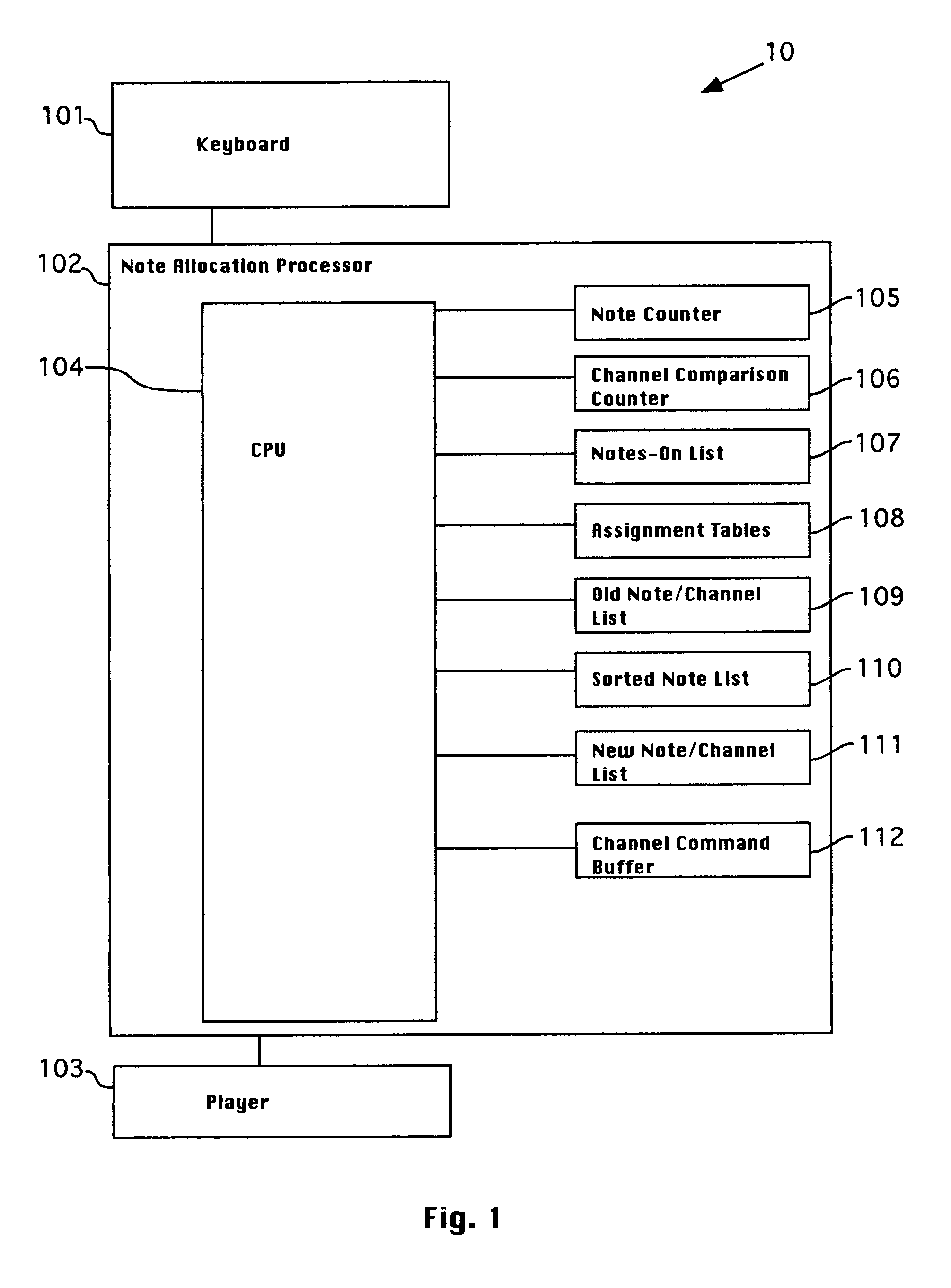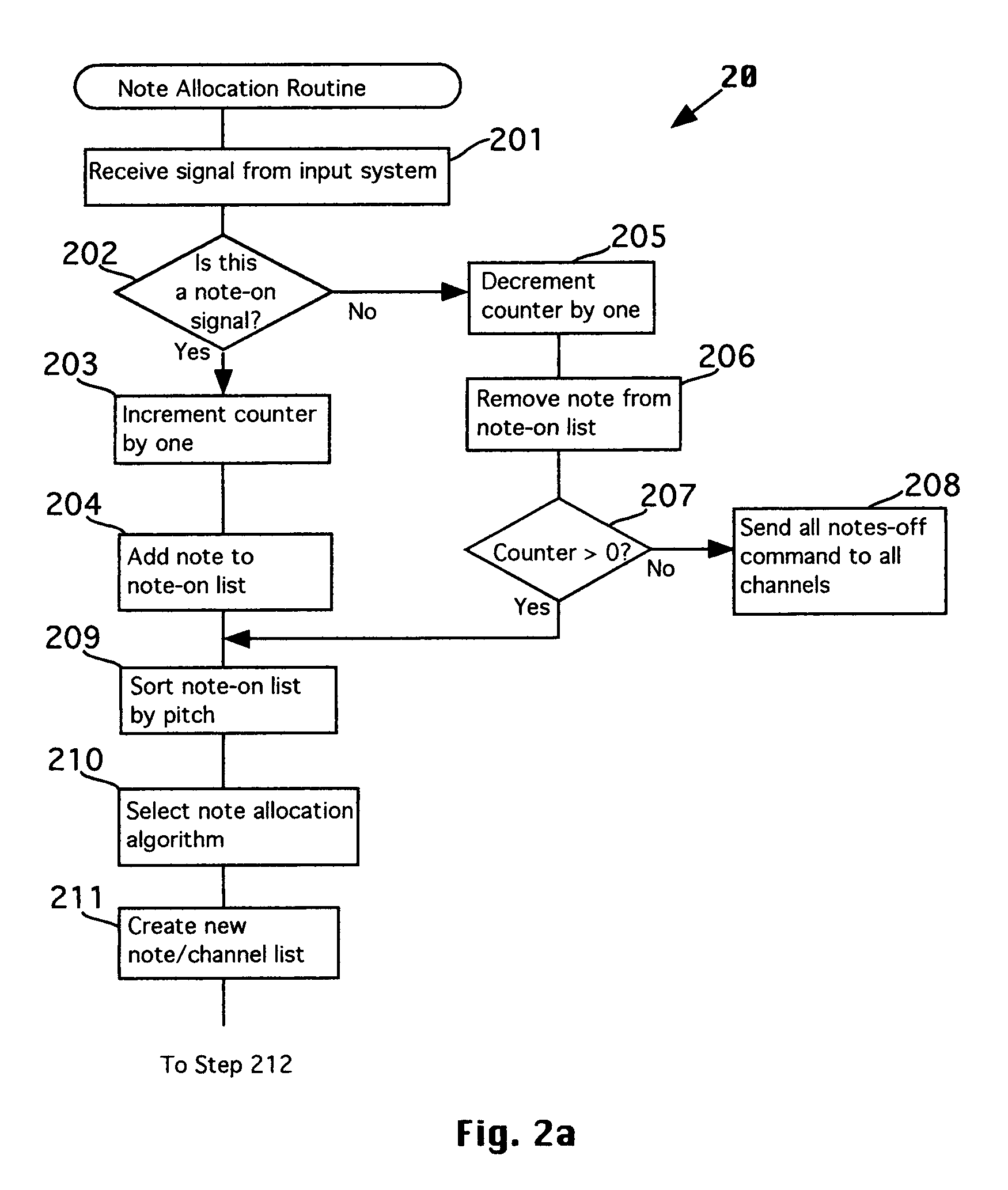System and method for dynamic note assignment for musical synthesizers
a dynamic note and synthesizer technology, applied in the field of playing or orchestrating musical material, can solve problems such as unrealistic sound quality
- Summary
- Abstract
- Description
- Claims
- Application Information
AI Technical Summary
Problems solved by technology
Method used
Image
Examples
Embodiment Construction
[0010]The present invention departs from traditional additive polyphony and is based upon a musical concept known as “divisi.” Divisi describes the way an actual orchestra would play a musical selection. If, for instance, an eight cello section of an orchestra were playing one, two or three notes at the same time, there could never be more than eight cellos playing at once. If only one note were being played, all eight would typically play that note. If two notes were being played, then perhaps four cellists would each play one note and four cellists would each play the other note. In reality, sometimes the more melodically important of the two notes would get preferential weighting; five cellists might play that note and the remaining three would play the other note. Similarly, with a triad (three notes), three cellists might play each of the two more melodically important notes, while the remaining two cellists played the third note. This is how divisi works in a real orchestra, a...
PUM
 Login to View More
Login to View More Abstract
Description
Claims
Application Information
 Login to View More
Login to View More - R&D
- Intellectual Property
- Life Sciences
- Materials
- Tech Scout
- Unparalleled Data Quality
- Higher Quality Content
- 60% Fewer Hallucinations
Browse by: Latest US Patents, China's latest patents, Technical Efficacy Thesaurus, Application Domain, Technology Topic, Popular Technical Reports.
© 2025 PatSnap. All rights reserved.Legal|Privacy policy|Modern Slavery Act Transparency Statement|Sitemap|About US| Contact US: help@patsnap.com



